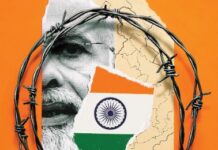Are we better off or worse than the pre-pandemic era? I bet the answer has wavered from one extremity to the other through the peaks and troughs of the past two years. Sure, inflation is the mascot of the legions of current economic perils. But the price tide has undoubtedly brought along economic growth as restitution. Pakistan, for instance, posted record-high inflation of 13 percent in January. Yet, the economy is set to expand by 4-5 percent in this fiscal year, despite the tightened monetary policy. It makes a fascinating case study if we observe the economy of Pakistan to answer the question: are we better off today?
Historically, economic growth gets publicized by every governing regime of Pakistan as a personal achievement. However, this scenario in particular is ruefully intriguing! The Ministry of Finance claims that GDP growth could even breach the 5-percent mark by July 2022. However, the IMF claims that 4 percent is the likeliest level of expansion. Differences of estimates aside, the Finance Ministry fails to acknowledge that the current account deficit, currently hailed as the lowest monthly tally in FY21-22, is also likely to breach the historic $20 billion mark, almost 5 pcent of the national GDP, by the end of this fiscal year.
While growth in the Large Scale Manufacturing (LSM) sector gets celebrated as a milestone, the bulging circular debt gets conveniently avoided in celebratory debates. It seems as if the wishful agenda of carving the circular debt below Rs 2 trillion got long forgotten. On the contrary, political point-scoring is costing billions in price differential accruals because the governing regime holds a fanatical purview that a temporal slump in petroleum prices is the bliss of relief. Tangible relief would have been long-term crude contracts in 2020, when a ruthless price war rendered oil prices in a sub-zero range. That could have sailed us through the soaring oil markets today.
A recent headline sparked my interest: ‘Federal Board of Revenue (FBR) registers historic growth of 18% in the financial year 2020-21’. A joyous moment for a layman Pakistani: the same gullible strata of this society that unknowingly falls to the deceit and duplicity of our policymakers. This supposed growth in the coffers of the FBR was achieved by leeching the salaried class of Pakistan. According to the Pakistan Bureau of Statistics (PBS), about 1.24 million salaried people filed their tax returns in 2021. That makes up just about 6 percent of the entire population of Pakistan.
No, we are not better off but further down the abyss. The pandemic might have wrecked the economy for a brief stint. But it did disabuse the myth of prosperity in Pakistan after a really long time. The rich are richer in a post-pandemic reality; the working class is still the cash cow of the economy.
That is the arching achievement of the FBR: a practically non-existent tax net. Out of these 1.24 million Pakistanis, 27 percent fall in the income bracket of Rs 50,000 per month. The Uber-rich making more than Rs 4.1 million per month, barely make up 2000 individuals filing tax returns. What about bringing more of the elite class to pay their dues to society? No, that’s an achievement that has been in progress for the past four years but to no apparent avail.
The nominal tax rate levied on the upper class is 30 percent, which is nominal, thanks to brazen tax evasion. However, the middle-class is still taxed at 15 percebt to 20 percent with dire measures of scrutiny over capital income. Research shows that the average household income of the highest quintile is three times the average income of the lowest quintile in Pakistan. Then why is the tax brace tightened like a noose for the lowest quintile? And what has the noble government offered to the richest quintile? Well, for starters, a relief package to the elite industrialists (who should rather fall in the targeted tax bracket for fiscal revenue collection). Lucrative interest rates have been offered to the overseas Pakistanis – a plea to bring the money back without a penalty but a reward!
The IMF has now proposed a ludicrous proposition under the seventh review for the next tranche of the $6 billion loan. The proposal aims to levy a single tax rate of 30 percent on the salaried class earning in the range of Rs 104,000 to Rs 1 million per month. The blatant lack of equity in this proposal perfectly sums up the misery of a lower-middle-class family earning Rs 110,000 per month. The family would end up paying Rs 30,000 in taxes amidst soaring prices and interest rates. Employment opportunities would vanish, and investment endeavors (besides government securities) are sadly theoretical. Ultimately, the revenue goal of the FBR would be compensated by the same strata of the society that is helpless to revolt, homeless to exile, and tactless to evade poor policymaking.
The answer to my question earlier is an emphatic NO! No, we are not better off but further down the abyss. The pandemic might have wrecked the economy for a brief stint. But it did disabuse the myth of prosperity in Pakistan after a really long time. The rich are richer in a post-pandemic reality; the working class is still the cash cow of the economy. Let me rephrase my answer earlier – not all of us are better off in a post-pandemic reality. That being the case, I am vexed enough to posit another question: are we better off governed by corrupt politicians or deceptive noblemen like Imran Khan?























